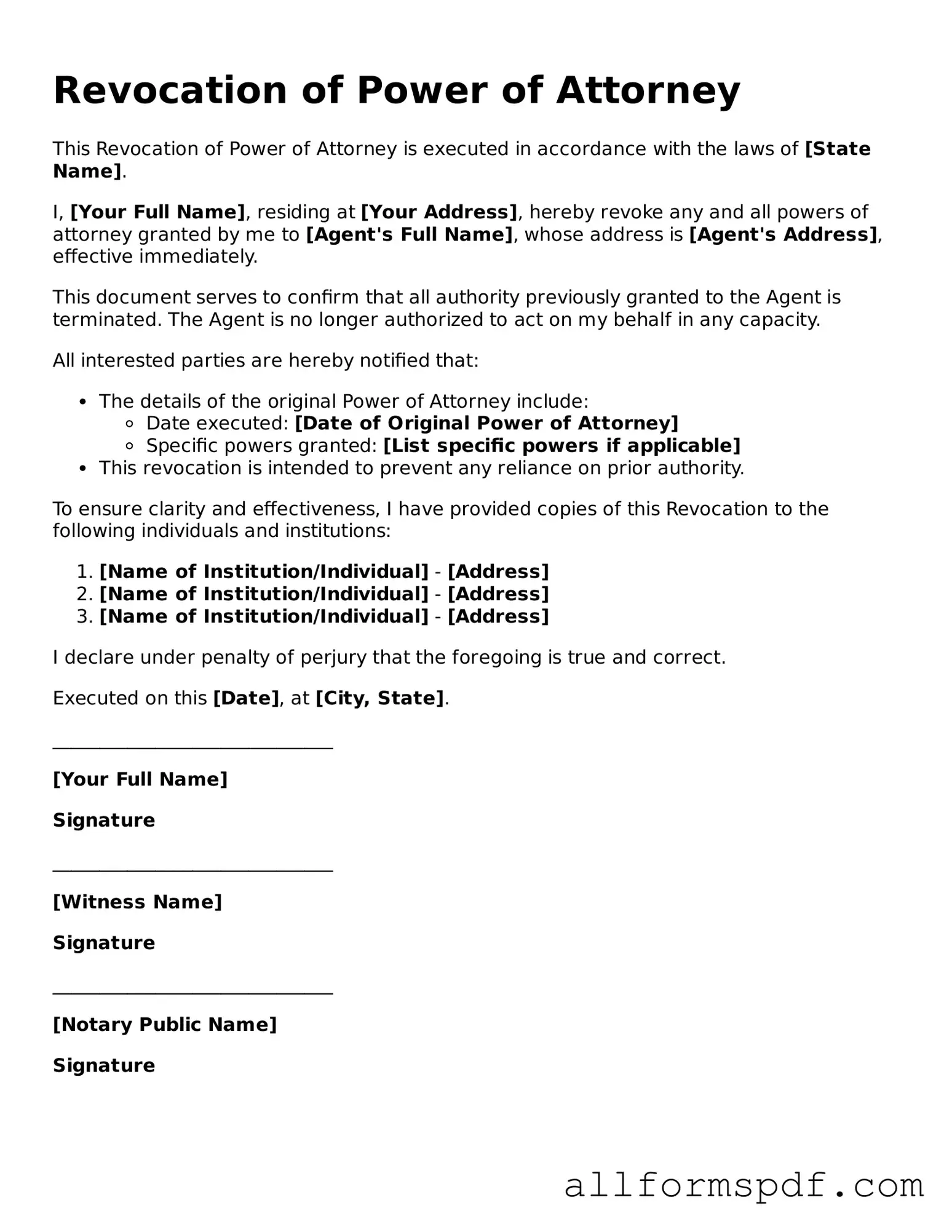Filling out a Revocation of Power of Attorney form can seem straightforward, but many people make common mistakes that can lead to confusion or legal issues. One frequent error is not including the correct date of the revocation. The date is crucial because it indicates when the power of attorney is officially revoked. If the date is missing or incorrect, it can create complications regarding the validity of the revocation.
Another mistake is failing to clearly identify the original agent. The form should specify who is being revoked as the agent. Omitting this information can result in ambiguity, making it unclear who is no longer authorized to act on your behalf. Always double-check that the agent's name is spelled correctly and matches the original power of attorney document.
Some individuals neglect to sign the revocation form. A signature is essential for the document to be valid. Without it, the revocation may not hold up in legal situations. Additionally, witnesses or notarization may be required depending on state laws. Ignoring these requirements can render the revocation ineffective.
Another common oversight is not providing a copy of the revocation to the original agent. After completing the form, it's important to inform the agent that their authority has been revoked. Failing to do so can lead to misunderstandings and could allow the agent to continue acting on your behalf, which defeats the purpose of the revocation.
People often forget to notify relevant third parties about the revocation. Institutions like banks, healthcare providers, or any other entities that may have relied on the original power of attorney should be informed. Without this notification, they may continue to accept instructions from the revoked agent, causing further complications.
In some cases, individuals fill out the revocation form without consulting legal advice. While it’s possible to complete the form independently, having a legal expert review it can prevent mistakes and ensure that it complies with state laws. Each state has different requirements, and being unaware of these can lead to invalid revocations.
Additionally, some may not keep a copy of the revocation for their records. It's important to retain a signed copy for personal reference. This can be helpful in case any disputes arise in the future regarding the authority of the revoked agent.
Lastly, people sometimes fail to consider the timing of the revocation. If the revocation is made during a time when the principal is incapacitated or under duress, it may be challenged later. Ensuring that the revocation is made when the principal is of sound mind is crucial for its validity.
